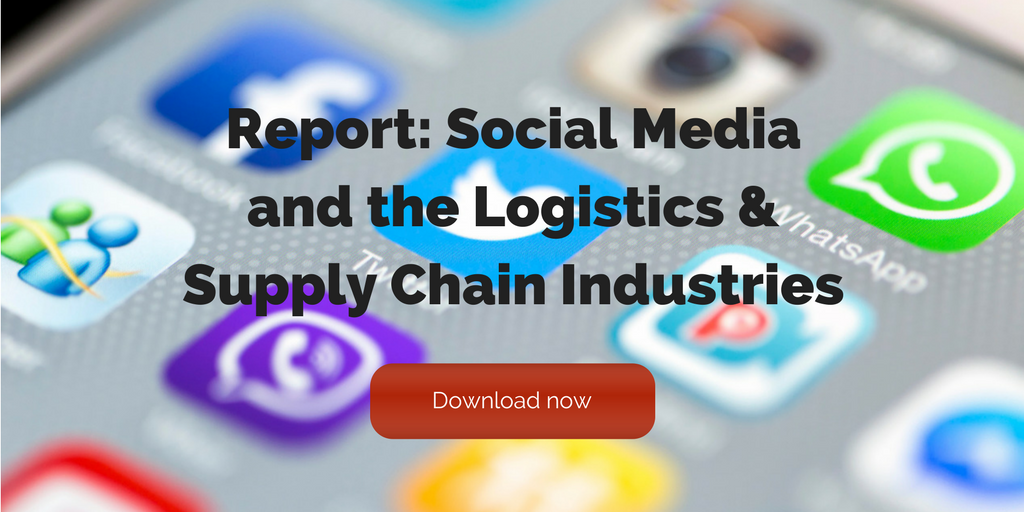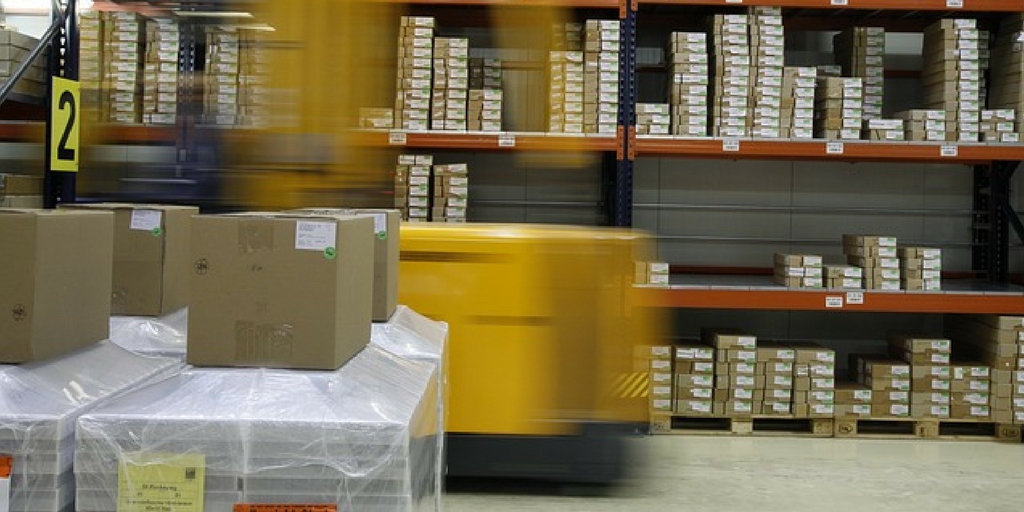
by Fronetics | Dec 18, 2017 | Blog, Leadership
Our most-viewed leadership posts from this year cover positive and negative leadership characteristics and provide examples of exceptional industry leaders.
One of my favorite experiences from 2017 was interviewing Ellen Voie, the CEO of Women In Trucking. A true inspiration, Voie exhibits tangible passion for promoting more gender diversity into the transportation space, but her practical, strategic approach is the hallmark of her success. She is an exceptional leader, and I feel privileged to have gotten this opportunity.
Our top leadership posts from 2017 examine what makes a good leader, as well as what makes a bad leader. They also look at some executive thought leadership about industry trends, and talk about graduate programs from which future leadership may be matriculating.
Top 10 leadership posts
1) 80% of Executives Say Procurement Isn’t Strategic Enough
Tis guest post from Argentus Supply Chain Recruiting looks at insights from the Procurement 2020 Survey. The survey of 200 C-Suite executives from a variety of industries and functions presents a rather dispiriting picture of the Procurement function today — or at least how it’s perceived. The majority of executives don’t think procurement is crucial to business leadership, and that it isn’t a key input when making high-level strategic decisions. Read full post
2) Women In Trucking’s Ellen Voie Paves the Way for Women Drivers & Managers
Ellen Voie is successfully breaking down barriers and changing the perception of the trucking industry. As founder and president of Women In Trucking (WIT), Voie and her team work to promote the organization’s mission “to encourage the employment of women in the trucking industry, promote their accomplishments, and minimize obstacles faced by women working in the industry.” I spoke with Voie about her experiences in the transportation industry, as well as her hopes for WIT and the future of women truckers. Read full post
3) Top Supply Chain Management MBA Programs 2018
We write frequently about the importance of recruiting and strengthening the relationship between academia and the supply chain industry as means to solve the growing supply chain talent gap. If your company is looking to hire, consider strengthening your rapport with schools that offer supply chain programs or specialties. The U.S. News & World Report annual rankings give companies in the supply chain and logistics industries an idea of where some of the brightest graduates, who will be seeking employment in the upcoming months, will be coming from. Read full post
4) 5 Ways to Push Employees to Be Their Best without Stressing Them Out
Management works to create a balance between pushing employees and pushing them past their limits. Leaders should create a safe and supportive environment where employees feel respected and, in turn, cooperative and productive. With this is mind, it’s important to incorporate tangible ways of reducing stress for your employees. This post offers some ideas. Read full post
5) How to Be a Bad Leader: 6 Common Characteristics of Poor Leadership
What’s the number one reason talented employees quit? Gallop polls show that 50% of employees cite their managers as the reason for leaving. A bad leader can cost your company. And poor leadership at the highest levels of a company can be detrimental to a business. This post outlines 6 common characteristics of poor leadership that should be red flags to all companies. Read full post
6) Should You Get an MBA in Supply Chain or a Designation?
Again, our friends at Argentus Supply Cain Recruiting ask an important question: What value do you see in getting a Master’s Degree in Business/Supply Chain vs. some of the designations out there? The recruiting experts speak to what companies are looking for in hiring, and how graduating from these programs builds your personal brand. Read full post
7) Should You Freeze Hiring During Uncertain Economic Times?
Despite an 8-year bull market, many businesses are still licking the wounds caused by the 2007 financial crisis. Add a volatile political climate and predictions of impending economic turbulence, and you can’t blame those growing wary of rapid growth or expansion opportunities. But, as the supply chain is already suffering from a talent gap, can companies afford to slow or freeze hiring — or, even, to downsize? Research suggests that organizations that balance caution with a forward-looking talent-acquisition strategy may fair best through difficult economic times. Read full post
8) Why Supply Chain and Logistics Executives Should Be Active on Social Media (as Themselves)
With their relative celebrity, supply chain and logistics executives are uniquely positioned to attract a following of customers, prospects, potential talent, industry peers, and admirers. They can use social media to connect with these people, share their ideas and industry news, and become the human face of their brands. It amplifies the company’s social media efforts in a way brands can’t do themselves. Read full post
9) Women Leaders Who Make the Supply Chain Flow
We have had the opportunity to interview 6 supply chain leaders about their professional experiences, as well as their thoughts on gender diversity in the industry and beyond. Interviewees include: Kendrea Durr-Smith, Director of Global Trade Compliance, Arrow Electronics; Barbara Jorgensen, Co-Founder and Managing Editor, Electronics Purchasing Strategies; Hailey McKeefrey, Editor-in-Chief, EBN; Cathy Morris, Senior Vice President and Chief Strategy Officer, Arrow Electronics; Mickey North Rizza, VP of Strategic Services, BravoSolution; and Kelli Saunders, President, Morai Logistics. Read full post
10) There Are Lessons in Success, Not Just Failure
Companies have a responsibility to ask the tough questions when things go awry. We have all been in these meetings: we diagnose failures, and we dissect the process, tools and staff involved to get to the root of the problem. Unfortunately, most companies only step back and really dive into what happened when something bad happens. But what if companies took the same approach when something went right? Read full post
Related posts:

SaveSave

by Fronetics | Dec 14, 2017 | Blog, Logistics, Supply Chain
Here are our most-viewed blog posts from 2017 about the supply chain and logistics industries, including posts about some of the largest supply chain companies in the world, Starbucks and Amazon.
Throughout the year, we write innovative posts to help readers stay in the know with the latest news and happenings to the supply chain & logistics industries. These posts provide insightful and relevant information from thought leaders, current trends, and tips to stay ahead of your competitors. Here’s a look at our most popular posts from this year.
Here are our top 10 supply chain and logistics posts of 2017.
1. Supply Chain Putting the ‘Star’ in Starbucks
Starbucks’ closely managed supply chain may be the key to the premium coffee giant’s success. The international coffee giant has widely studied and acclaimed supply chain management practices, which, according to some, make Starbucks’ coffee and customer experience superior to those of its competitors. Read more.
2. 8 Must-Follow Logistics & Supply Chain Blogs for 2017
Supply chain professionals should be following these eight blogs to keep up with the latest industry news and happenings in the coming year. They cover a range of topics, from technology to strategy, and feature thought leadership by some of the brightest minds in the field. Read more.
3. Top 5 Trends to Know to Compete with Amazon’s Supply Chain
Supply chains must accept that they cannot equal the power of Amazon’s supply chain without embracing new trends. While supply chain entities struggle to stay competitive with the e-commerce giant, more organizations will look for ways to eliminate inefficiencies and boost operations. Fortunately, these five trends may alleviate some of the strains of competition by giving supply chain partners an advantage in the global market. Read more.
4. 5 Podcasts for the Supply Chain and Logistics Professionals
These podcasts bring the latest news and thought leadership in the supply chain and logistics industries right to your earbuds. Podcast’s popularity has skyrocketed since the smartphone became as necessary as car keys, giving you to-the-minute facts and information, right in the palm of your hand. If you’re looking to increase your podcast listening, here are five that highlight topics of interest to supply chain and logistics professionals. Read more.
5. What’s the Difference between Supply Chain Management and Logistics (Infographic)
Argentus’ infographic sheds light on the differences between these often-confused functions. Both Logistics and the wider Supply Chain are vital to how companies run today, but the two are still so often confused. We put together an infographic outlining some of the key differences and points of overlap between them. Read more.
6. 5 Books Every Supply Chain Professional Should Read
Add these books to your reading list to stay on top of industry trends and jump start your professional development. Read more.
7. What are the Supply Chain Impacts of Amazon’s Whole Foods Acquisition?
Amazon’s foray into the grocery space has larger implications for its overall strategy, and the possible benefits for the eCommerce goliath are diverse. Big news out of the grocery retail world as Amazon has announced its acquisition of major organic foods retailer Whole Foods Market – for an eye-popping $13.7 billion sale price that doesn’t look so massive given Amazon’s $136 billion sales volume in 2016. Read more.
8. Packaging Trends to Watch in 2017
Will sustainability trends from the consumer packaging industry have an impact on electronics manufacturing this year? Packaging trends suggest a wide range of startups, researchers, and big companies are committed to finding solutions that match the buzzwords du jour — sustainable, bio-degradable, natural, and eco-friendly. Read more.
9. The Top 3 Logistics and Supply Chain Blogs for 2017 – Readers’ Choice!
Our readers voted Morai Logistics, Women in Trucking, and the Oracle Supply Chain Management Blog as the top 3 logistics and supply chain blogs of 2017. Every year we ask our readers to vote for the best industry blogs. The results are always interesting — there’s really a lot of great supply chain and logistics content out there, plus it’s great to see where our readers are finding value. Read more.
10. The State of Supply Chains: The Supply Chain Has Gone Digital (Infographic)
2016 was the year of the digital supply chain — here’s a look at how things changed. The digital transformation has already reached most supply chain organizations. Per GT Nexus, 75% of executives surveyed recognized the digital supply chain as an important factor for the next five years. Read more.
Related posts:


by Fronetics | Dec 12, 2017 | Blog, Content Marketing, Marketing
Our most-viewed content marketing posts indicate that marketers are seeking solutions to improve their content marketing programs.
Supply chain and logistics marketers are increasingly seeing the value of content marketing. It is the most cost-effective method to earn leads and sales because it takes into account the way modern B2B buyers are making purchasing decisions (evaluating content they find on the internet).
Looking at our most-viewed content marketing posts this year, I see a trend: marketers are looking for solutions to improve their content marketing programs. I am currently working on our content calendar for 2018, so if there is anything specific you would like to know about, please feel free to email me with suggestions!
Top 10 content marketing posts
1) 4 Ways to Measure Brand Awareness
Building brand awareness is one of the key benefits of content marketing, but it’s notoriously difficult to measure. These four metrics can indicate that you are successfully drawing the public’s attention to — and heightening their knowledge of — your business. That will ultimately generate leads that turn into sales, which is the end marketing objective. Read full post
2) How to Write Better Headlines for LinkedIn Content in 2017
A study of 2016’s most popular content on LinkedIn used data to measure the most popular headlines and topics. The results are really interesting and say a lot about what content resonates with the general LinkedIn community. Tis post summarizes the most popular headline phrases and the most impactful headline words and topics, and suggests ow to use this knowledge to write more successful headlines for your LinkedIn content. Read full post
3) 4 Steps to Building a Successful DIY Content Marketing Strategy
Setting your content marketing strategy is a crucial first step in trying to reach your target audience. Before you begin writing blogs and posting tweets, you need to set goals. A content marketing strategy outlines the methods by which you will target, reach, and engage your audience. Here are four steps, outlined in the guide, to creating a successful foundation to your content marketing strategy. Read full post
4) Want More Leads? Write Better Content
All too often, marketers fall into the trap of sacrificing quality for quantity in their content writing efforts. It’s an easy mistake to make — the pressure to produce a constant stream of content can naturally lead to a drop in quality. But if you’re not writing high-quality, substantive content, you’re wasting time and energy. If you’re wondering whether your content might not measure up, ask yourself these six questions. Read full post
5) 7 Marketing Tasks Supply Chain and Logistics Companies Should Consider Outsourcing
Everyone needs a little help sometimes. In fact, 52% of B2B marketers attribute stagnancy in success to not having enough time devoted to their marketing programs, and 49% attribute stagnation to content creation challenges. Outsourcing marketing allows you to focus on insourcing your core competencies while delegating specialized tasks to external experts. And it’s important to note that you don’t have to outsource ALL of your marketing. Choosing several areas beyond your staff’s expertise or that are particularly time-consuming can help you improve your marketing efforts and take stress off an overworked internal marketing team. Read full post
6) 10 Stats You Should Know about the B2B Buyer’s Journey
Marketers need to be aware of the ways in which the B2B buyer’s journey has changed over the last decade. The vast amount of information available on the internet has afforded buyers a level of self-sufficiency that renders traditional sales models moot. It drives the need for new strategies, like content marketing and social media marketing. The latest B2B Buyer’s Survey offers insight into how B2B buyers are finding vendors, engaging with them, and — ultimately — deciding to work with one. Read full post
7) 3 Tools for Measuring Your Content Marketing ROI
Analyzing the right metrics is crucial to determining whether you are achieving content marketing ROI. According to our Social Media Use Report, 81% of respondents wanted a tracking and measuring tool to prove their ROI. Your resources are limited, so it’s crucial to evaluate your efforts with meaningful numbers that illustrate their effect on your bottom line. So what are they best metrics to use? Here are three of our favorite tools. Read full post
8) 3 Content Marketing Challenges Large B2B Enterprises Face
B2B enterprises with 1000+ employees face unique content marketing challenges that can hinder a program’s overall success. The Content Marketing Institute’s 2017 B2B Enterprise Content Marketing Report brings many of these issues to light. For example, pressure to produce results quickly is a death sentence for content marketing. And being forced to create content for a brand, rather than a specific audience, can be detrimental to content marketing results. Yes, challenges facing these enterprise marketers are often as large as the companies for which they work. This post looks at some of the reasons why that is, and a few solutions for solving them. Read full post
9) How Word of Mouth Can Work for You
Buyers value the opinions of peers and colleagues. In fact, B2B buyers rank it among their top three resources for information. And, in general, 82% of Americans seek recommendations when making a purchase of any kind. Make their chatter work for you. Here are three tips to turn word-of-mouth marketing into leads. Read full post
10) 3 Quick SEO Tips to Improve Your Blog Right Now
Content marketing aims to draw potential buyers who are searching the internet for products and services like yours to your website. The strategic distribution of content helps search engines understand what your website is all about and direct relevant parties to it. You can help the search engines’ algorithms more effectively link searchers and your content by doing these 3 easy things. Read full post
Related posts:


by Fronetics | Dec 11, 2017 | Big Data, Blog, Data/Analytics
Here are our most-viewed blog posts from 2017 about big data/analytics, including articles about using big data in supply chain/logistics and competitive benchmarking.
“Big data” has been a hot-button word in supply chain and logistics circles for several years now. But the concept of using big data to measure performance and improve operations is only gaining steam. We predict big data/analytics will be more important in 2018 and beyond.
This year, the Fronetics blog examined big data/analytics in a number of ways — both within the context of supply chain and logistics operations and using data and analytics to improve marketing performance. Here is a look at our most-viewed big data/analytics posts in 2017.
Top 5 big data/analytics posts
1) Top 10 Logistics Metrics to Measure Your Supply Chain Efficiency
The supply chain plays an integral part in maintaining a well-functioning organization. A well-structured and organized warehouse will help you achieve your distribution goals and adequately analyze metrics. That is why it is important to ensure you are measuring certain data points in your logistics operation to ensure efficiency. This guest post from Demetra Mallios of Catch-Up Logistics suggests which logistics metrics can help you identify issues in your warehouse before they become a problem. Read full post
2) 3 Tools to Help You Benchmark Marketing Performance against Your Competitors
To define success within your market and industry, you need to look outside what’s going on internally in your organization and compare yourself to your peers. That is why competitive benchmarking is so important. But running another set of reports and keeping track of all those metrics could be a full-time job within itself — and ain’t nobody got time for that. The good news is there are some really effective tools available for marketers to quickly, even automatically, benchmark their performance against the competition. Read full post
3) You Need to Benchmark Your Marketing Performance against Competitors
When it comes to measuring marketing performance, most marketers look inward, focusing on key performance indictors (KPIs) such as website traffic, open rates, social engagement metrics, and conversion rates. While these inward facing KPIs are important, it is also important to look at what is happening outside your organization and to benchmark your marketing performance against peers and competitors. This will give you the knowledge and drive you need to improve your performance and chance of success. It can help you to identify threats and strategic opportunities. Read full post
4) 11 Metrics to Measure in Last-Mile Logistics
This guest post from Adam Robinson of Cerasis examines the data shippers should be tracking to drive down the high cost of last-mile logistics. And, interestingly, Robinson does not believe that reduced costs must mean cutting customer service. In fact, he recommends integrating customer service data into delivery operations and transportation systems as a key step to increasing your brand’s value. Read full post
5) 3 Lessons from Big Data to Make Your Content More Relevant
Searchmetrics founder Marcus Tober discusses how data is changing the relevancy of content in his conference talk, Mastering the World of Deep Learning: How Big Data Is Making Content More Relevant in Search. As a pioneer in search-analytics software, Tober has watched search engines become more advanced at figuring out which web pages people will find relevant. Through years of research, Tober offers three lessons to make your content more relevant. Read full post
Runner-up posts:


by Jennifer Hart Yim | Dec 7, 2017 | Blog, Logistics, Manufacturing & Distribution, Supply Chain
Within the month, the electronic logging device mandate will take effect. While shippers have known about the mandate for two years, truckers, shippers and carriers are still concerned about how it will impact capacity.
This post comes to us from Adam Robinson of Cerasis, a top freight logistics company and truckload freight broker.
Paired with soaring manufacturing and tightening capacity within the last month, the electronic logging device (ELD) mandate could cause the capacity crunch to worsen. In addition, other regulations, like changing attitudes and backlash at the environmental protection agency (EPA) and struggling infrastructure in Hurricane-affected areas, could cause further capacity problems. To help prevent the worsening of the capacity crunch, let’s take a closer look at how the ELD mandate and other regulations may affect capacity.
What Is the ELD Mandate?
The ELD mandate is a portion of the “Moving Ahead for Progress in the 21st Century” bill, which was passed by the United States Congress in 2012, explains ELDFacts.com. The bill outlines criteria for highway funding and the use of ELDs for use in a trucker’s Record of Duty Status. Today, the record of duty status is used to record compliance with an existing hours of service (HOS) requirements. Although the ELD mandate is a means to tracking HOS requirements, the two laws are completely different. As a result, but the ELD mandate and HOS regulations may have separate impacts on the capacity crunch.
When Does It Take Effect?
The ELD mandate is set to take effect December 18, 2017, and unfortunately, many owner-operator, truckers have not yet completed the installation of ELDs or found an appropriately authorized and licensed ELD vendor, says Jeff Berman of Supply Chain 24/7. However, the Federal Motor Carrier Safety Administration (FMCSA) will not begin requiring inspectors to place commercial motor vehicle drivers without and installed ELD out of service until April 1, 2018.
Even truckers with prior ELDs installed, which may have been installed before 2012, the upcoming ELD deadline has stringent requirements for what type of ELD may be used and who may install it. Truckers with existing ELDs from the pre-ELD mandate period will be automatically grandfathered into the existing list of ELDs at the end of 2019. Therefore, truckers looking to continue driving for the next two years need to have a new, approved ELD installed no later than the April deadline, if not the preferred December deadline. In the interim, politicians are still in debate about if the costs of installing new ELDs is justified under existing regulations, reports Supply Chain Dive. However, part of the reason the FMSCA has not yet rescinded or pushed back implementation revolves around HOS requirements.
What About HOS Regulations and the Capacity Crunch?
The capacity crunch revolves around how much available capacity is being used at any given time in the trucking industry. As a result, capacity is directly tied to the number of drivers which may be operating at any given time simultaneously. According to the FMCSA, the HOS rules are quite specific for property-carrying drivers. These include the following:
- Truckers have an 11-hour driving limit, and truckers may only drive a maximum of 11 hours after 10 consecutive hours off duty. Considering the amount of time required to park a truck, take breaks and other activities, it is nearly impossible for drivers to get in a full, 11 hours of daily driving while still obtaining the 10 required, consecutive hours off duty.
- Drivers now also have a 14-hour absolute driving limit for driving after coming on duty, following 10 consecutive hours of off-duty.
- Drivers must also take breaks and may only drive if eight hours or less have passed since the end of the drivers last off-duty.
- Perhaps the biggest impact for the HOS regulation is its specification of how many hours a driver may work within an eight-day period. If the driver drives for seven consecutive days, a trucker may not drive more than 60 hours on duty in the same period. Similarly, driver may not drive more than 70 hours with it in eight consecutive days. This consecutive. Can only restart after a driver takes 34 or more hours off duty.
Considering the HOS requirements, think about what this means for driver completing a two-way trip that requires 10 hours each way. The driver may now be limited to only making 14 total roundtrips within a seven-day period. Prior to the HOS requirement implementation, the same driver could have successfully completed an extra two trips by adding 2.5 hours to the daily driving schedule. Under the new HOS guidelines, the number of trips drivers may make is severely limited.
The Big Picture
The HOS requirements directly revolve around the ELD implementation and vice versa. The ELD will be used to track and monitor drivers existing adherence to HOS regulations, so regulations may adversely affect existing trucking capacity. Shippers need to consider how the ELD mandate and HOS regulations will result in a tightening of the existing capacity upon implementation, and even if the impact is not immediate, it will come to fruition within the next year. Shippers forgoing implementation of the ELD mandate within their fleets could face stiff penalties and other setbacks due to enforcement actions taken by the FMSCA.
Related posts:







